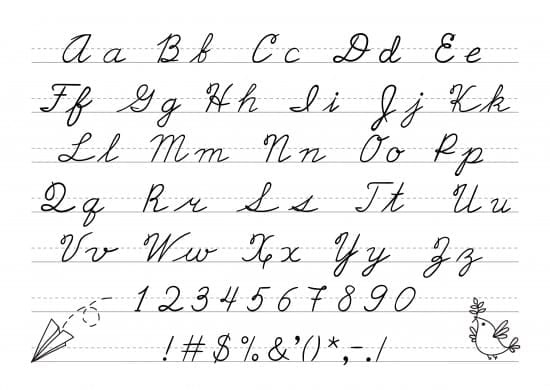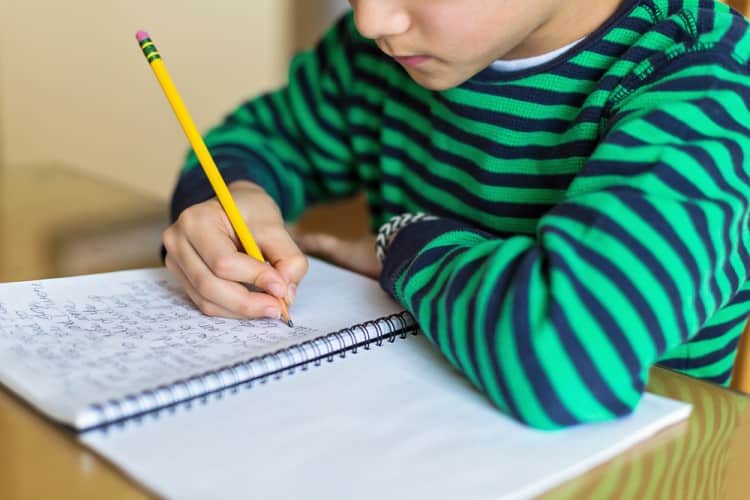Stealth dyslexia is the term that’s used to describe children who struggle in school despite having average or gifted reading abilities. Does your child have a larger vocabulary than most adults you know, but find it hard to use a pencil? Does your child read books suited to a college student but often mispronounce words? Are his grades just not showing what you know he can do? It’s possible your child has stealth dyslexia. It’s not as uncommon as you might think.
When we hear the word “dyslexia” most of us think of reading difficulties. The experts, too, define dyslexia as something to do with reading, a skill most children master by the end of third grade. In 2002, for instance, the board of directors of the International Association for Dyslexia adopted this official definition of dyslexia:
Dyslexia is characterized by difficulties with accurate and / or fluent word recognition and by poor spelling and decoding abilities. These difficulties typically result from a deficit in the phonological component of language that is often unexpected in relation to other cognitive abilities and the provision of effective classroom instruction. Secondary consequences may include problems in reading comprehension and reduced reading experience that can impede growth of vocabulary and background knowledge.
Still, it is important to note that dyslexia is a complex neurocognitive or brain difference that is different for every person, since no two cases of dyslexia are exactly alike. If we think of the brain as a circuit board, it’s easy to see that the wires can be tangled or disconnected in a variety of ways, each tangle or disconnection having its own, specific end result. For this reason, the concept of dyslexia as a reading difficulty just doesn’t cover all bases.

Dyslexia can, for instance, cause difficulties with spoken language, handwriting skills, physical coordination, math ability, organization and time management, sequencing, time orientation, left/right orientation, visual or auditory processing, memory, hand/eye coordination, and spatial awareness. Sometimes there are even specific terms to describe the various difficulties caused by dyslexia. Dysgraphia, for example, is a writing difficulty, while dyspraxia is a difficulty with physical coordination. Dyscalculia is a difficulty with numbers and math. Despite the fact that terms have been developed for these three learning differences, all of them are types of dyslexia. Dyslexia is an umbrella term that covers a lot of ground.
Drs. Fernette and Brock Eide developed the term “stealth dyslexia” to describe students who struggle in school, despite having excellent reading and/or verbal skills. The husband and wife team (both of them dyslexic), added the word “stealth” to the word “dyslexia” to reflect the idea that such children fall under the radar and escape diagnosis for dyslexia, because their symptoms are not those we normally think of as being associated with dyslexia. As a result, these students don’t receive the help they need to manage their learning problems. Which is a shame.
Stealth Dyslexia And Gifted
Often, children with stealth dyslexia have such great verbal skills they may even be thought of as “gifted.” Children with stealth dyslexia may use their advanced verbal skills as cover for their mild issues with auditory and visual processing; issues that in other children may cause the reading difficulties more typically associated with dyslexia. After seeing this type of dyslexia so often in their practice, the Eides decided this difficulty deserved a name of its own, and called it “stealth dyslexia” to hint at the nature of this sort of dyslexia that so often fails to draw attention and so goes undetected and unaddressed.

By far, the most common manifestation of stealth dyslexia is dysgraphia, or poor handwriting skills. Children with dysgraphia find it difficult to translate the words in their heads into symbols created with paper and pen. They lack the motor skills necessary to make writing happen. It can be physically painful for such children to write, and their attempts at writing are difficult for others to read.
In the early grades, children are taught how to form letters, with arrows explaining where to start and how to proceed. A child with dysgraphia will be unable to remember these instructions and may end up with exaggerated loops, uneven spacing between letters and words, and inverted or reversed letters. The child may not be able to remember where to place a sound within a word when writing it down.
Stealth Dyslexia And Clumsiness

When faced with the signs of dysgraphia in their children, parents may react with confusion. They see a child with (sometimes) college-level verbal skills who cannot write the letters of the alphabet. Where the child is also clumsy because of the sensory motor skills issue known as dyspraxia, the gap between his report card and his obvious giftedness will be even more apparent to the naked eye. The last thing a parent will think of is that his child has dyslexia, because the child has good or even amazing reading skills.
Stealth dyslexia is not as common as plain old garden variety dyslexia. As such, even an expert evaluation may fail to turn up the real problem as yes, just a variation on a theme, that theme being dyslexia. That’s a shame, because given the proper tools, there’s no reason a child with stealth dyslexia can’t excel in his schoolwork. A keyboard, for instance, may mean the difference between a failing grade on a term paper, and a groundbreaking paper filled with original ideas set forth in solid, legible type.

There is no cure for dyslexia and the same holds true for stealth dyslexia, which after all is just another form of dyslexia. But there are ways and means to deal with the issues that arise. A child who is brilliant with words, but can’t add two plus two, for instance, can receive the correct sort of interventions with an early diagnosis of dyscalculia, a form of stealth dyslexia.
If your child is verbally gifted and reads like a fiend, yet struggles in school, it’s a good idea to have him evaluated by a dyslexia expert for stealth dyslexia and the sooner the better. Early interventions can make or break a child’s academic career. And when it’s your child, failure is never an option.

It is an informative article Varda Epstein. There is no specific test for dysgraphia, but as a special education teacher working with school psychologist, we diagnose students with dysgraphia using a number of different assessments.
Simply having poor handwriting does not mean that your student has a diagnosis of dysgraphia. Along with poor handwriting, additional signs and symptoms of dysgraphia include:
• Cramped or awkward pencil grip and body position.
• Mixing printed and cursive letters within the same word.
• Mixing lower- and uppercase letters within the same word.
I think it really depends on the school and the teacher how well they manage dyslexia students. I no doubt agree that like all professions, you get people who are good and not so good at their jobs, I have to say that there are rare institutes where these special children gets the support THEY need. I (personally) believe Winston Preparatory School (http://www.winstonprep.edu/) is working with great devotion. I really appreciate the hard work of such institutes who are sincere with their work.
Wow. I wonder what it costs to go to school at Winston.
My child is already 15 and was just diagnosed dyslexic. His lexile is 1210 and with a slew of accommodations he is getting g c’s and writing at grade level. Should he still have remediation? He uses technology to make up for his poor spelling, proof reading and tracking while reading. He also uses speech to text for writing, audio books, and time and a half on assignments and tests. Does he not need remediation like structured word inquiry?
It seems crazy that he was only diagnosed now! Would he cooperate with remediation? He is likely set in his ways, and might feel uncomfortable learning new tricks. If he is willing to try, give it a whirl and see if it helps. If in six months, you see no difference, it’s probably not going to help.
My DS is turning 14 this week and we are finally just figuring out the “stealth dyslexia” part of his issues as well. He is gifted, has an amazing vocabulary, has never struggled with reading up until this year when his civics teacher was worksheet packet happy and we noticed that he completed them so much slower than the rest of his advanced class. He would spend five hours on this nonsense. Nightly. So we got more testing and we started learning more about stealth dyslexia. I think it truly is a thing. We have the same quandary. Do we remediate at this stage of the game and what does that look like exactly? I can’t even imagine trying to get him to go to remedial sessions after school with all of the homework he gets from his advanced classes. I am wondering if any in school personnel are qualified enough to know what they’re doing with a kid like mine.
To answer your question: I doubt it. I think stealth dyslexia might even escape notice during an evaluation. Guess that’s why they call it “stealth” dyslexia. But a proper evaluation with someone who really listens and is up to date on all the research might just see it. I wish you and your son good luck.
Hi! My son just turned 12 and we got the evaluation done and his scores are much lower then we would of ever guessed. So my opinion is the eval is definitely worth doing!